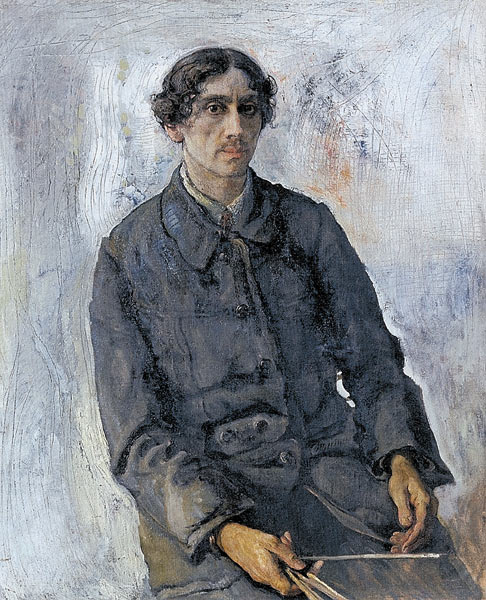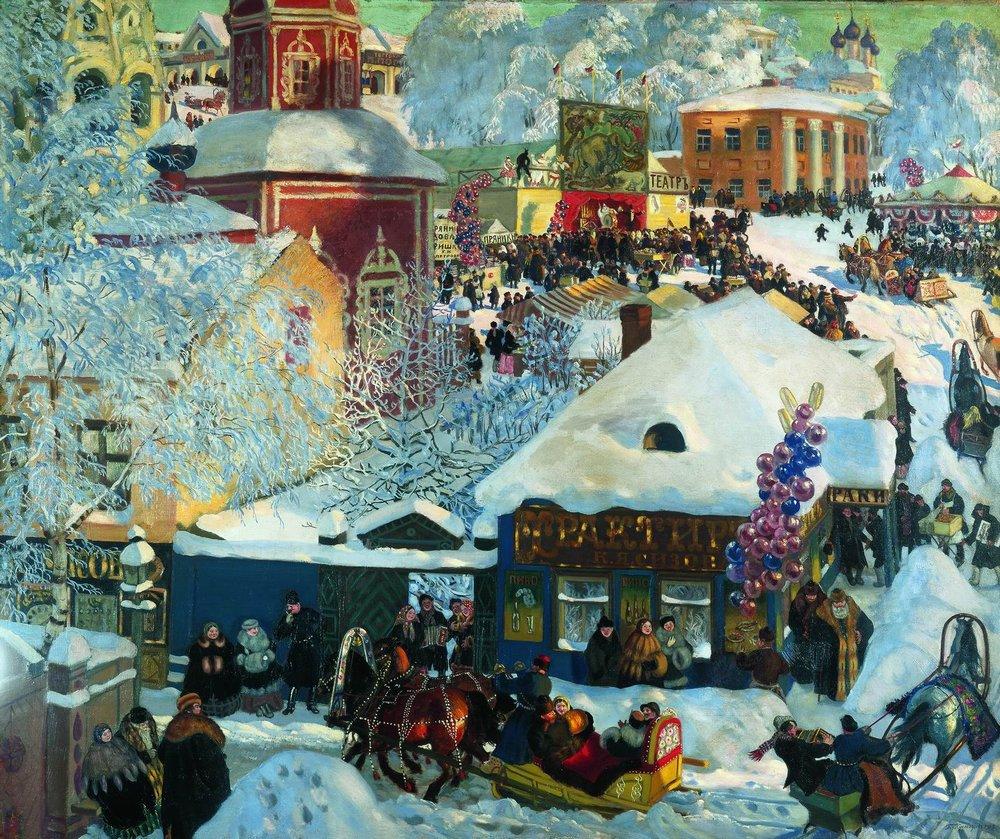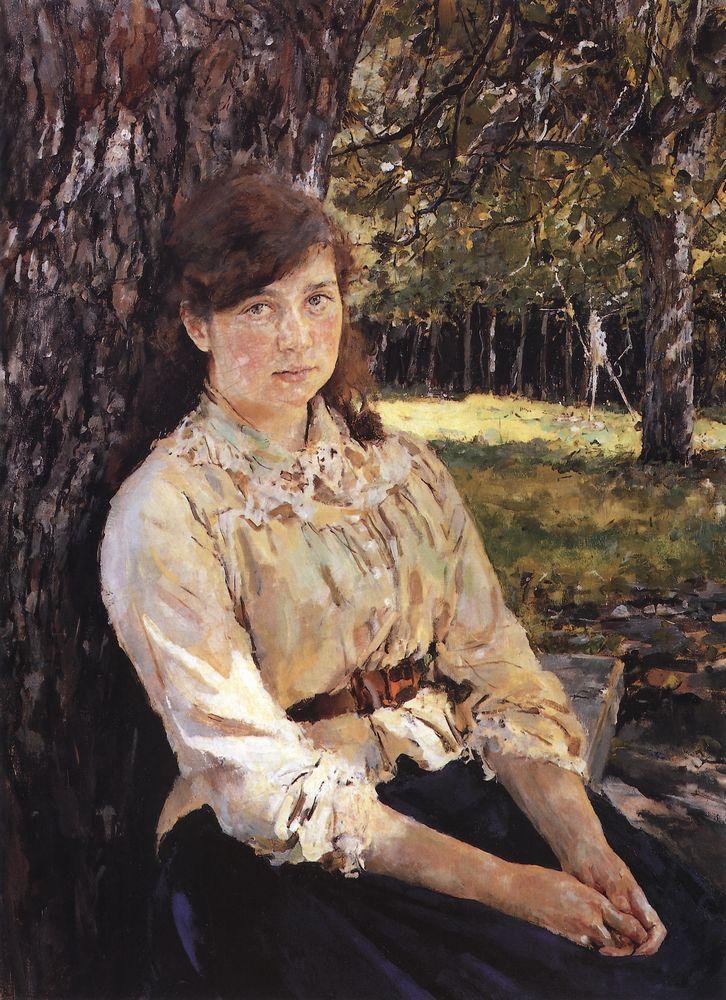|
Isaak Brodsky
Isaak Izrailevich Brodsky (russian: Исаак Израилевич Бродский; uk, Іса́к Ізраїльович Бро́дський, – 14 August 1939) was a Soviet painter whose work provided a blueprint for the art movement of socialist realism. He is known for his iconic portrayals of Lenin and idealized, carefully crafted paintings dedicated to the events of the Russian Civil War and Bolshevik Revolution. Life and career Brodsky was born in the village of Sofiyivka near Berdyansk in what is now Ukraine to Yisrael, a Jewish merchant. He studied at Odessa Art Academy and the Imperial Academy of Arts in Saint Petersburg. In 1916, he joined the Jewish Society for the Encouragement of the Arts. When Brodsky asked Lenin to autograph his painting ''Lenin'', he said: "I am signing to what I don't agree with for the first time". Brodsky was on good terms with many leading Russian painters, including his mentor, Ilya Repin. He was an avid art collector who don ... [...More Info...] [...Related Items...] OR: [Wikipedia] [Google] [Baidu] |
Ilya Repin
Ilya Yefimovich Repin (russian: Илья Ефимович Репин, translit=Il'ya Yefimovich Repin, p=ˈrʲepʲɪn); fi, Ilja Jefimovitš Repin ( – 29 September 1930) was a Russian painter, born in what is now Ukraine. He became one of the most renowned artists in Russia during the 19th century. His major works include ''Barge Haulers on the Volga'' (1873), '' Religious Procession in Kursk Province'' (1880–1883), ''Ivan the Terrible and His Son Ivan'' (1885); and ''Reply of the Zaporozhian Cossacks'' (1880–1891). He is also known for the revealing portraits he made of the leading literary and artistic figures of his time, including Mikhail Glinka, Modest Mussorgsky, Pavel Tretyakov and especially Leo Tolstoy, with whom he had a long friendship. Repin was born in Chuguyev, in Kharkov Governorate of the Russian Empire. His father had served in an Uhlan Regiment in the Russian army, and then sold horses. Repin began painting icons at age sixteen. He failed at his first ... [...More Info...] [...Related Items...] OR: [Wikipedia] [Google] [Baidu] |
Berdyansk
Berdiansk or Berdyansk ( uk, Бердя́нськ, translit=Berdiansk, ; russian: Бердя́нск, translit=Berdyansk ) is a port city in the Zaporizhzhia Oblast (province) in south-eastern Ukraine. It is on the northern coast of the Sea of Azov, which is the northern extension of the Black Sea. It serves as an administrative center of Berdiansk Raion (district), though it does not belong to the raion. The city is named after the Berda River forming the Berdianska Spit at the foot of which it is located. Berdiansk is home to a safari zoo, water park, museums, health resorts with mud baths and climatic treatments, and numerous water sport activities. Since 27 February 2022, it is under Russian military occupation. Name Its original name was "Kutur-Ogly". The city name changed to "Novo-Nogaisk" in 1830 ("New Nogaisk") (see Nogai). The present name was given to the city in 1841 by special decree of Nicholas I and named after the nearby Berda River. Between 1939 and 1958 t ... [...More Info...] [...Related Items...] OR: [Wikipedia] [Google] [Baidu] |
Piotr Vasiliev
Piotr Konstantinovich Vasiliev (russian: Пё́тр Константи́нович Васи́льев; January 26, 1909 – June 9, 1989) was a Russian Soviet realist painter, who lived and worked in Leningrad. He was a member of the Leningrad Union of Artists and regarded as one of representatives of the Leningrad school of painting. Biography Piotr Konstantinovich Vasiliev was born January 26, 1909, in Saint Petersburg, Russian Empire in the working-class family. In 1930, Piotr Vasiliev entered at the first course of Department of Painting at the Leningrad Institute of Painting, Sculpture and Architecture, where he studied of noted educators Mikhail Bernshtein, Alexander Lubimov, Vladimir Serov, Arcady Rylov. In 1938 Piotr Vasiliev graduated from the Leningrad Institute of Painting, Sculpture and Architecture in Isaak Brodsky studio, together with Alexander Laktionov, Yuri Neprintsev, and other young artists. His graduated work was historical painting named "Farewell ... [...More Info...] [...Related Items...] OR: [Wikipedia] [Google] [Baidu] |
Piotr Belousov
Piotr Petrovich Belousov (russian: Пётр Петро́вич Белоу́сов; May 3, 1912 – March 31, 1989) was a Ukrainian and Russian graphic artist, painter, art teacher, professor of the Ilya Repin Leningrad Institute of Painting, Sculpture and Architecture, People's Artist of the USSR, corresponding member of the Academy of Arts of the USSR, who lived and worked in Leningrad. He was regarded as one of the brightest representatives of the Leningrad school of painting, being most famous for his portraits and historical paintings. Biography Piotr Petrovich Belousov was born May 3, 1912 in the port city Berdiansk, located on the northern coast of the Sea of Azov, of south-east Ukraine, Russian Empire. In 1929, Piotr Belousov met with Brodsky and by his invitation comes to Leningrad to continue his study. He engaged in drawing and painting under Brodsky leadership, as well as in the studio AKhRs and the Community of Artists. In 1933, Piotr Belousov entered the first ... [...More Info...] [...Related Items...] OR: [Wikipedia] [Google] [Baidu] |
Yuri Neprintsev
Yuri Mikhailovich Neprintsev (russian: Ю́рий Миха́йлович Непри́нцев; August 15, 1909 – October 20, 1996) was a Soviet Union, Soviet, later Russians, Russian, painter, graphic artist, art teacher, professor of the Repin Institute of Arts, People's Artist of USSR, and a member of the Imperial Academy of Arts, Academy of Arts of the USSR. He lived and worked in Leningrad and is regarded by art historian Sergei V. Ivanov as one of the brightest representatives of the Leningrad School of Painting, Leningrad school of painting, most famous for his genre and battle paintings. Biography Yuri Mikhailovich Neprintsev was born August 15, 1909, in Tbilisi, Georgia (country), Georgia, Russian Empire. He came from the nobility. His father, Neprintsev Mikhail Nikolaevich was an architect, a Honored Art Worker of Science and Technology of the Georgian SSR (1946). In 1926, Neprintsev went to Leningrad to continue his education. In the years 1926–1930, he studied ... [...More Info...] [...Related Items...] OR: [Wikipedia] [Google] [Baidu] |
Aleksandr Ivanovich Laktionov
Aleksandr Ivanovich Laktionov (Russian: Александр Иванович Лактионов; 16 May 1910 – 15 March 1972) was a Socialist realism painter in the post-war Soviet Union. His meticulous and almost photo-real style was popular, but courted controversy among art critics and other artists. Laktionov was born in Rostov-on-Don and studied in the Leningrad Academy of Arts from 1926–1929 and later as a postgraduate from 1938-1944. Laktionov was a pupil of the artist Isaak Brodskii and was influenced by his technical and realistic approach, which followed the traditions of the Old Masters. Laktionov’s breakthrough work was ''A Letter From the Front'' (1947), which captured the prevailing mood among the people of the Soviet Union following the German-Soviet War. It is a highly optimistic work, bathed in a warm glow, which became a motif of Laktionov’s later works and Socialist Realism in general. Laktionov became most famous for his genre paintings such ... [...More Info...] [...Related Items...] OR: [Wikipedia] [Google] [Baidu] |
Nikolai Timkov
Nikolai Efimovich Timkov (russian: Тимко́в Никола́й Ефи́мович; August 12, 1912 – December 25, 1993) was a Soviet Russian painter, Honored Artist of Russian Federation, and a member of the Saint Petersburg Union of Artists (before 1992 the Leningrad branch of Union of Artists of Russian Federation). He lived and worked in Leningrad and is regarded as one of the leading representatives of the Leningrad School of Painting, worldwide known for his landscape paintings. Biography Nikolai Efimovich Timkov was born August 12, 1912, at a settlement of Nakhichevanskaya Dacha close to Rostov-on-Don, Russian Empire. His parents, Efim Yegorovich Timkov and Vasilisa Timofeevna Ablyazova were peasants from the Saratov province. In 1892, they moved to Rostov-on-Don. A father worked as a general worker. The family had four older children. Parents died in 1924, when Nikolai was twelve years old. Care of him took the older sisters. In 1927, Nikolai Timkov finished 8 gr ... [...More Info...] [...Related Items...] OR: [Wikipedia] [Google] [Baidu] |
Russian SFSR
The Russian Soviet Federative Socialist Republic, Russian SFSR or RSFSR ( rus, Российская Советская Федеративная Социалистическая Республика, Rossíyskaya Sovétskaya Federatívnaya Socialistíčeskaya Respúblika, rɐˈsʲijskəjə sɐˈvʲetskəjə fʲɪdʲɪrɐˈtʲivnəjə sətsɨəlʲɪˈsʲtʲitɕɪskəjə rʲɪˈspublʲɪkə, Ru-Российская Советская Федеративная Социалистическая Республика.ogg), previously known as the Russian Soviet Republic and the Russian Socialist Federative Soviet Republic as well as being unofficially known as Soviet Russia,Declaration of Rights of the laboring and exploited people, article I. the Russian Federation or simply Russia, was an Independence, independent Federalism, federal socialist state from 1917 to 1922, and afterwards the largest and most populous of the Republics of the Soviet Union, Soviet socialist republics of the So ... [...More Info...] [...Related Items...] OR: [Wikipedia] [Google] [Baidu] |
Boris Kustodiev
Boris Mikhaylovich Kustodiev (russian: Бори́с Миха́йлович Кусто́диев; – 28 May 1927) was a Russian and Soviet painter and stage designer. Early life Boris Kustodiev was born in Astrakhan into the family of a professor of philosophy, history of literature, and logic at the local theological seminary. His father died young, and all financial and material burdens fell on his mother's shoulders. The Kustodiev family rented a small wing in a rich merchant's house. It was there that the boy's first impressions were formed of the way of life of the provincial merchant class. The artist later wrote, "The whole tenor of the rich and plentiful merchant way of life was there right under my nose... It was like something out of an Ostrovsky play." The artist retained these childhood observations for years, recreating them later in oils and water-colours. Art studies Between 1893 and 1896, Kustodiev studied in theological seminary and took private art lessons ... [...More Info...] [...Related Items...] OR: [Wikipedia] [Google] [Baidu] |
Mikhail Vrubel
Mikhail Aleksandrovich Vrubel (russian: Михаил Александрович Врубель; March 17, 1856 – April 14, 1910, all New Style, n.s.) was a Russian Painting, painter, Drawing, draughtsman, and sculptor. A prolific and innovative master in various media such as painting, drawing, decorative sculpture, and theatrical art, Vrubel is generally characterized as one of the most important artists in Russian symbolism, Russian Symbolist tradition and a pioneering figure of Modernist art. In a 1990 biography of Vrubel, the Soviet art historian considered his life and art as a three-act drama with prologue and epilogue, while the transition between acts was rapid and unexpected. The "Prologue" refers to his earlier years of studying and choosing a career path. The "first act" peaked in the 1880s when Vrubel was studying at the Imperial Academy of Arts and then moved to Kiev to study Byzantine art, Byzantine and Christian art. The "second act" corresponded to the so- ... [...More Info...] [...Related Items...] OR: [Wikipedia] [Google] [Baidu] |
Isaak Levitan
Isaac Ilyich Levitan (russian: Исаа́к Ильи́ч Левита́н; – ) was a classical Russian landscape painter who advanced the genre of the "mood landscape". Life and work Youth Isaac Levitan was born in a shtetl of Kibarty, Augustów Governorate in Congress Poland, a part of the Russian Empire (present-day Lithuania) into a poor but educated Jewish family. His father Elyashiv Levitan was the son of a rabbi, completed a Yeshiva and was self-educated. He taught German and French in Kowno and later worked as a translator at a railway bridge construction for a French building company. At the beginning of 1870 the Levitan family moved to Moscow. In September 1873, Isaac Levitan entered the Moscow School of Painting, Sculpture and Architecture where his older brother Avel had already studied for two years. After a year in the copying class Isaac transferred into a naturalistic class, and soon thereafter into a landscape class. Levitan's teachers were the famous ... [...More Info...] [...Related Items...] OR: [Wikipedia] [Google] [Baidu] |
Valentin Serov
Valentin Alexandrovich Serov (russian: Валенти́н Алекса́ндрович Серо́в; 19 January 1865 – 5 December 1911) was a Russian painter and one of the premier portrait artists of his era. Life and work Youth and education Serov was born in Saint Petersburg, son of the Russian composer and music critic Alexander Serov and his wife and former student Valentina Serova, also a composer in her own right. Raised in a highly artistic milieu he was encouraged to pursue his talents by his parents and in his childhood he studied in Paris and Moscow under Ilya Repin and in the St. Petersburg Academy of Arts (1880–1885) under Pavel Chistyakov. Serov's early creativity was sparked by the realistic art of Repin and strict pedagogical system of Chistyakov. Further influences on Serov were the old master paintings he viewed in the museums of Russia and Western Europe, friendships with Mikhail Vrubel and (later) Konstantin Korovin, and the creative atmosphere ... [...More Info...] [...Related Items...] OR: [Wikipedia] [Google] [Baidu] |







